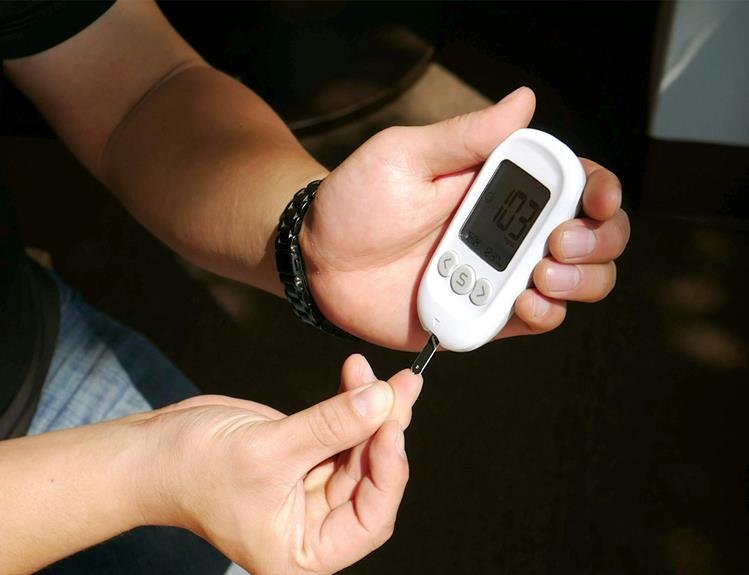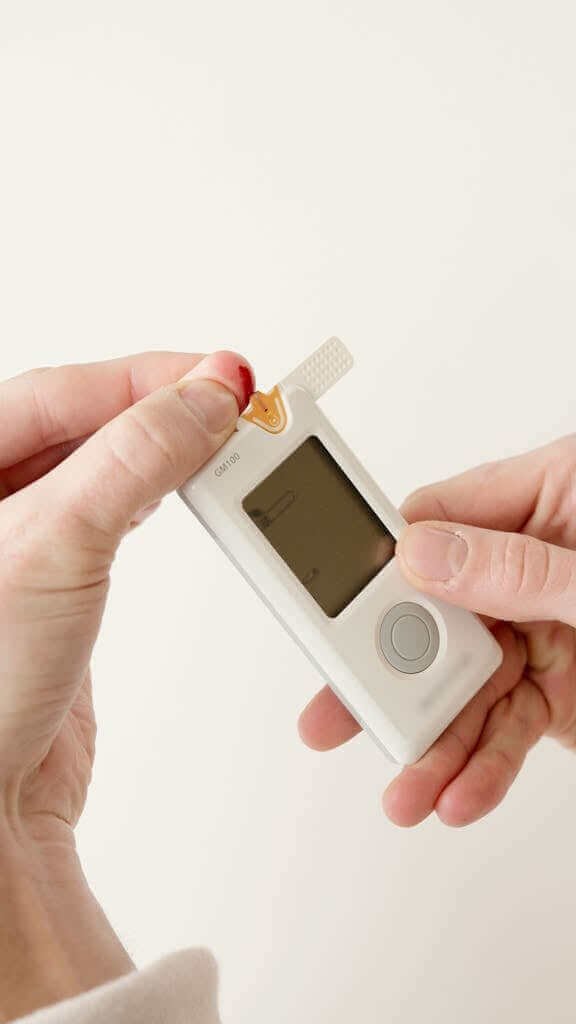Understanding the Link Between Diabetes and Amputation: What You Need to Know
When it comes to diabetes, there's a significant connection to be aware of concerning the possibility of amputation. Understanding the intricate relationship between these two factors is crucial for your overall well-being.
By exploring the underlying reasons behind this association, you can gain valuable insights that may help you navigate potential risks more effectively.
Stay tuned to uncover essential information that could make a difference in your health journey.
Diabetes and Amputation: An Overview
When considering diabetes and amputation, it's essential to understand the significant impact the condition can have on the body. Diabetes, a chronic disease affecting how your body processes glucose, can lead to various complications, with one of the most severe being the risk of amputation. High levels of glucose in the blood can damage nerves and blood vessels, particularly in the lower extremities. This damage can result in poor circulation and nerve damage, increasing the likelihood of foot ulcers that may eventually require amputation if left untreated.
Individuals with diabetes must be vigilant in caring for their feet to prevent complications that could lead to the need for amputation. Proper foot hygiene, regular check-ups with healthcare providers, maintaining healthy blood sugar levels, and wearing appropriate footwear are crucial steps in minimizing the risk of amputation.
Understanding the connection between diabetes and amputation empowers individuals to take proactive measures in managing their condition and reducing the chances of severe complications.
Risk Factors for Amputation in Diabetes
To understand the risk factors for amputation in diabetes, it's crucial to recognize the key indicators that elevate the likelihood of this serious complication. One significant risk factor is peripheral arterial disease (PAD), which restricts blood flow to the legs and feet, leading to tissue damage and an increased risk of amputation.
Another important factor is neuropathy, a condition where nerve damage impairs sensation in the extremities, making individuals less likely to notice injuries that can develop into serious ulcers or infections. Poor circulation due to diabetes-related vascular issues also contributes to the risk of amputation as it hinders the body's ability to heal wounds effectively.
Additionally, foot deformities, such as bunions or hammertoes, can create pressure points that are more prone to developing sores. Lastly, a history of foot ulcers or amputations increases the likelihood of future amputations, emphasizing the importance of proactive foot care and ongoing monitoring for individuals with diabetes.
Impact of Poor Blood Sugar Control
Poor blood sugar control significantly increases the risk of complications in individuals with diabetes, including the potential for amputation. When your blood sugar levels are consistently high, it can damage the blood vessels and nerves in your feet, leading to poor circulation and decreased sensation. This combination of factors makes it more likely for wounds or ulcers to develop on your feet and for these wounds to heal slowly or become infected.
High blood sugar levels also weaken the immune system, making it harder for your body to fight off infections. If an infection progresses and spreads, it can become severe enough to require amputation to prevent it from spreading further and affecting your overall health. Therefore, it's crucial to keep your blood sugar levels within the target range recommended by your healthcare provider to reduce the risk of complications like amputation.
Importance of Foot Care in Diabetes
Taking care of your feet is essential for individuals with diabetes to prevent complications and maintain overall health. Proper foot care can help prevent serious issues such as ulcers, infections, and ultimately, amputations.
When you have diabetes, nerve damage (neuropathy) and poor circulation can make your feet more susceptible to injuries and infections. To avoid these risks, inspect your feet daily for any cuts, blisters, redness, or swelling. Wash your feet with mild soap and warm water, making sure to dry them thoroughly, especially between the toes.
Moisturize your feet to prevent dry skin and cracking, but avoid applying lotion between the toes. Trim your toenails carefully and straight across to prevent ingrown nails. Always wear well-fitting shoes and clean, dry socks to protect your feet from injuries. If you notice any issues or have trouble caring for your feet, consult a healthcare professional immediately to prevent complications.
Proper foot care is crucial in managing diabetes and ensuring your overall well-being.
Detection and Management of Ulcers
When it comes to managing ulcers in diabetes, you need to be aware of the risk factors that can lead to their development. By following some prevention tips, such as proper foot care and regular check-ups, you can reduce the chances of ulcers forming.
Understanding the treatment options available will help you address any ulcers promptly and effectively.
Ulcer Risk Factors
Early identification of key ulcer risk factors plays a crucial role in the effective detection and management of ulcers in individuals with diabetes. One major risk factor is peripheral neuropathy, which impairs sensation in the feet, making it difficult to detect injuries.
Poor circulation, common in diabetes, also contributes as it slows down the healing process. Foot deformities such as bunions or hammertoes increase pressure points, leading to ulcers. Additionally, calluses or corns can build up due to abnormal gait patterns, creating areas prone to ulceration.
Furthermore, smoking and uncontrolled blood sugar levels heighten the risk of ulcers. Regular foot inspections, proper footwear, maintaining optimal blood sugar levels, and seeking immediate medical attention for any foot issues are essential in managing ulcer risk factors.
Ulcer Prevention Tips
To effectively prevent ulcers in individuals with diabetes, prioritize regular foot inspections and proper footwear. Check your feet daily for any signs of redness, swelling, cuts, or sores. Ensure you're wearing comfortable shoes that fit well to prevent rubbing and pressure points. Keep your feet clean and moisturized, but avoid moisturizer between the toes to prevent excess moisture buildup. Trim your toenails straight across to prevent ingrown nails. Avoid going barefoot, especially outdoors.
Maintain good blood sugar control to promote overall foot health. If you notice any issues with your feet, seek prompt medical attention. These simple steps can significantly reduce the risk of ulcers and complications in diabetic individuals.
Ulcer Treatment Options
To effectively manage ulcers in individuals with diabetes, prompt detection and proper treatment are crucial components for preventing further complications. If you notice any signs of an ulcer, such as redness, warmth, or drainage on your foot, it's important to seek medical attention immediately.
Treatment options for ulcers may include cleaning the wound, applying medication or dressings, and offloading pressure from the affected area. Your healthcare provider may also recommend keeping weight off the foot to promote healing.
Regular monitoring and follow-up visits are essential to track the progress of the ulcer and ensure that it's healing properly. Remember, early intervention is key to preventing ulcers from worsening and potentially leading to amputation.
Surgical Interventions for Amputation
When considering surgical interventions for amputation, consulting with a qualified healthcare provider is crucial to determine the most appropriate course of action for your specific situation. In cases where other treatments have been ineffective or the condition is severe, amputation may be necessary. Surgical interventions for amputation involve removing the affected part of the limb to prevent the spread of infection and further complications. The surgery aims to promote healing and reduce pain, enabling you to resume daily activities with the help of rehabilitation and prosthetic options.
Some common types of amputation procedures include partial foot amputation, below-the-knee amputation, above-the-knee amputation, and partial hand amputation. The specific type of amputation you may require depends on the extent of the damage and the location of the affected area. Your healthcare provider will discuss the potential risks, benefits, and expected outcomes of the surgery with you to ensure you're well-informed and prepared for the procedure.
Rehabilitation and Prosthetic Options
As you progress through your recovery, you'll learn about the rehabilitation process, the various types of prosthetics available, and how rehabilitation addresses the challenges you may face.
This phase will introduce you to the steps involved in regaining your mobility and independence, giving you insight into the tools and support systems at your disposal.
Embracing these options will empower you to navigate the road to recovery with confidence and determination.
Rehab Process Overview
Exploring the rehabilitation process after an amputation provides valuable insight into the prosthetic options available for individuals with diabetes. After an amputation, the rehabilitation process typically involves working closely with a team of healthcare professionals, including physical therapists, occupational therapists, and prosthetists.
The main goals of rehabilitation are to improve mobility, enhance independence, and ensure a successful transition to using a prosthetic limb. Physical therapy focuses on strengthening muscles, improving balance, and learning how to use a prosthesis effectively. Occupational therapy helps individuals regain skills for daily activities. Prosthetists play a crucial role in designing, fitting, and adjusting prosthetic limbs to meet the specific needs and preferences of each person.
This comprehensive approach to rehabilitation ensures a smoother adjustment to life post-amputation.
Prosthetic Types Available
After undergoing the rehabilitation process following an amputation, your next step involves understanding the various types of prosthetics available to enhance your mobility and independence as an individual with diabetes.
Prosthetic options include basic models for daily use, more advanced models with added functionality, and high-tech prosthetics like bionic limbs. Basic prosthetics are typically more affordable and easier to use, while advanced models offer increased mobility and versatility. Bionic limbs are cutting-edge devices that can mimic natural movement to a higher degree.
Your prosthetist will work with you to determine the most suitable type of prosthetic based on your specific needs, lifestyle, and activity level. By exploring these options, you can find a prosthetic that best fits your goals and enhances your quality of life.
Rehabilitation Challenges Addressed
To overcome rehabilitation challenges and optimize your prosthetic options, it's crucial to work closely with your prosthetist to tailor a plan that aligns with your specific needs and goals. Your prosthetist will assess your physical condition, gait patterns, and functional abilities to recommend the most suitable prosthetic device.
Regular follow-up appointments will allow for adjustments and fine-tuning to ensure a comfortable fit and optimal functionality. Additionally, engaging in physical therapy can help you adapt to using your prosthetic limb effectively and improve your strength and mobility.
It's essential to communicate openly with your healthcare team about any difficulties or concerns you may have during the rehabilitation process to address them promptly and enhance your overall experience.
Preventive Strategies and Lifestyle Changes
Making consistent healthy choices in your daily routine can significantly reduce the risk of diabetes-related amputations. By maintaining a balanced diet rich in fruits, vegetables, whole grains, and lean proteins, you can better manage your blood sugar levels and lower the chances of complications that may lead to amputations.
Regular physical activity is also crucial in managing diabetes and promoting circulation to prevent ulcers and infections that can result in amputations. Aim for at least 150 minutes of moderate-intensity exercise per week, such as brisk walking or swimming, to improve your overall health and reduce the risk of diabetes-related complications.
Additionally, monitoring your blood sugar levels regularly and taking medication as prescribed by your healthcare provider is essential in controlling diabetes and preventing further complications. Avoid smoking and limit alcohol consumption, as these habits can worsen diabetes symptoms and increase the risk of amputations.
Remember that small, consistent lifestyle changes can make a significant impact on your health and well-being, reducing the likelihood of diabetes-related amputations.
Frequently Asked Questions
How Common Is It for Individuals With Diabetes to Undergo Multiple Amputations?
Multiple amputations are not uncommon among individuals with diabetes. It is a serious concern that some may face. It's crucial to manage diabetes effectively to reduce the risk of undergoing multiple amputations and maintain overall health.
Are There Any Specific Dietary Recommendations to Help Prevent Amputation in Individuals With Diabetes?
To prevent amputation in diabetes, maintain a balanced diet rich in fruits, veggies, whole grains, and lean proteins. Limit sugary drinks and processed foods. Consult a healthcare provider for personalized dietary recommendations to manage your condition effectively.
What Role Does Mental Health Play in the Recovery Process After an Amputation Due to Diabetes?
Maintaining good mental health is crucial for your recovery after an amputation due to diabetes. Stay connected with supportive people, seek counseling if needed, and stay positive. Your mindset can greatly impact your physical healing and overall well-being.
Can Regular Exercise Help Reduce the Risk of Amputation in Individuals With Diabetes?
Regular exercise significantly reduces the risk of amputation in individuals with diabetes. By staying active, you improve blood circulation, maintain a healthy weight, and enhance overall health, lowering the chances of complications that might lead to amputation.
Are There Any Support Groups or Resources Available for Individuals Who Have Undergone an Amputation Due to Diabetes?
There are numerous support groups and resources available for individuals who have undergone an amputation due to diabetes. These groups offer emotional support, practical advice, and shared experiences to help you navigate this challenging journey.
Conclusion
Now that you understand the link between diabetes and amputation, remember that taking care of your feet is crucial in managing your condition.
Despite the challenges, with proper medical care and lifestyle changes, you can reduce your risk of amputation.
Don't let fear hold you back – take control of your health and make the necessary changes to protect your future well-being.
Your feet are worth the effort!





